Benoit Gauzens
@bgauzens.bsky.social
Reposted by Benoit Gauzens
A brief delve into the recent science history of network theory (including food webs)
Something Strange Happens When You Trace How Connected We Are
Watch our latest video, in full, on YouTube - youtu.be/CYlon2tvywA
Watch our latest video, in full, on YouTube - youtu.be/CYlon2tvywA

Something Strange Happens When You Trace How Connected We Are
YouTube video by Veritasium
youtu.be
October 6, 2025 at 9:36 AM
A brief delve into the recent science history of network theory (including food webs)
Reposted by Benoit Gauzens
Does body size predict abundance the same way in all environments, as predicted by the Metabolic theory of Ecology? Our new study challenges this assumption. Read it here: 📄 doi.org/10.1111/ele....

Biodiversity modulates the cross‐community scaling relationship in changing environments
Organismal abundance typically declines with increasing body size, with metabolic theory predicting a universal size–abundance slope of –0.75. Using protist microcosms across gradients of species ric...
doi.org
October 6, 2025 at 11:25 AM
Does body size predict abundance the same way in all environments, as predicted by the Metabolic theory of Ecology? Our new study challenges this assumption. Read it here: 📄 doi.org/10.1111/ele....
Reposted by Benoit Gauzens
🌍📢 Postdoc alert | 3-yr starting 1/1/26
Understand how ecosystem stability is changing across space and through time using niche modelling, pinpoint at-risk species/regions, and build tools that drive conservation action🌿🧭📈
👉 tinyurl.com/2w2we5z8
#Ecology #Jobs #Biodiversity #RStats
Understand how ecosystem stability is changing across space and through time using niche modelling, pinpoint at-risk species/regions, and build tools that drive conservation action🌿🧭📈
👉 tinyurl.com/2w2we5z8
#Ecology #Jobs #Biodiversity #RStats

October 1, 2025 at 8:45 AM
🌍📢 Postdoc alert | 3-yr starting 1/1/26
Understand how ecosystem stability is changing across space and through time using niche modelling, pinpoint at-risk species/regions, and build tools that drive conservation action🌿🧭📈
👉 tinyurl.com/2w2we5z8
#Ecology #Jobs #Biodiversity #RStats
Understand how ecosystem stability is changing across space and through time using niche modelling, pinpoint at-risk species/regions, and build tools that drive conservation action🌿🧭📈
👉 tinyurl.com/2w2we5z8
#Ecology #Jobs #Biodiversity #RStats
Reposted by Benoit Gauzens
One in six species on Earth experienced extraordinarily high temperatures across more than 25% of their range in 2024--the hottest year on record. For most, this was the second year of extreme heat, likely compounding risks. In PNAS: www.pnas.org/doi/10.1073/...

September 11, 2025 at 6:16 PM
One in six species on Earth experienced extraordinarily high temperatures across more than 25% of their range in 2024--the hottest year on record. For most, this was the second year of extreme heat, likely compounding risks. In PNAS: www.pnas.org/doi/10.1073/...
Reposted by Benoit Gauzens
Super awesome new paper in #MEE describing #causal #detection of shifts in #biodiversity! So many great insights here—a must read for those interested in #causalinference
And love Fig 3! Congrats team! @lsantinieco.bsky.social
doi.org/10.1111/2041...
And love Fig 3! Congrats team! @lsantinieco.bsky.social
doi.org/10.1111/2041...

September 11, 2025 at 9:09 AM
Super awesome new paper in #MEE describing #causal #detection of shifts in #biodiversity! So many great insights here—a must read for those interested in #causalinference
And love Fig 3! Congrats team! @lsantinieco.bsky.social
doi.org/10.1111/2041...
And love Fig 3! Congrats team! @lsantinieco.bsky.social
doi.org/10.1111/2041...
Reposted by Benoit Gauzens
🔥Ignite - Warming threatens aquatic–terrestrial linkages: evidence from tropical geothermal streams
vist.ly/467kq
#BayesianMixingModels #EffectsOfWarming #FluxAcrossEcosystems #FoodWebStructure #IsotopicAnalyses #TropicalRiparianForest #WaterLandInterfaces
vist.ly/467kq
#BayesianMixingModels #EffectsOfWarming #FluxAcrossEcosystems #FoodWebStructure #IsotopicAnalyses #TropicalRiparianForest #WaterLandInterfaces

September 9, 2025 at 5:06 PM
🔥Ignite - Warming threatens aquatic–terrestrial linkages: evidence from tropical geothermal streams
vist.ly/467kq
#BayesianMixingModels #EffectsOfWarming #FluxAcrossEcosystems #FoodWebStructure #IsotopicAnalyses #TropicalRiparianForest #WaterLandInterfaces
vist.ly/467kq
#BayesianMixingModels #EffectsOfWarming #FluxAcrossEcosystems #FoodWebStructure #IsotopicAnalyses #TropicalRiparianForest #WaterLandInterfaces
Reposted by Benoit Gauzens
Mark Novak, @kecoblentz.bsky.social, John DeLong FTW - a very cool paper I need to dig carefully through!
Novak et al. derive a functional response model that unifies Holling’s classical forms. The model clarifies when linearity can be a mechanistically-reasoned description of predator feeding rates and the impact it has on predator-prey dynamics.
Read now!
www.journals.uchicago.edu/doi/10.1086/...
Read now!
www.journals.uchicago.edu/doi/10.1086/...
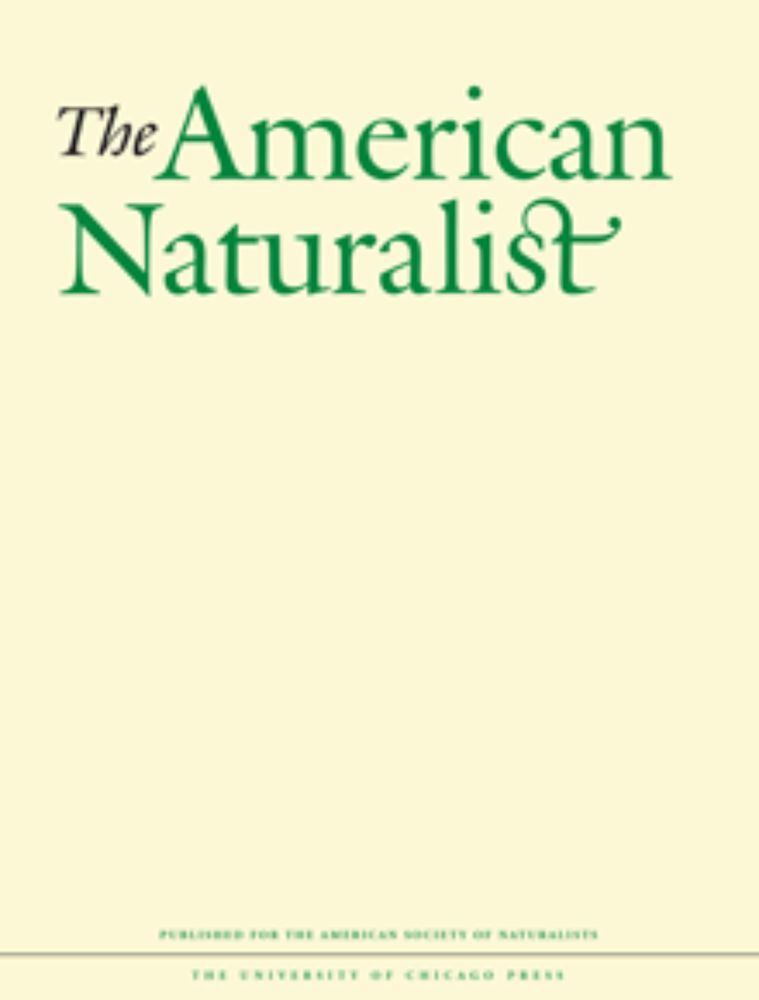
In Defense of Type I Functional Responses: The Frequency and Population Dynamic Effects of Feeding on Multiple Prey at a Time | The American Naturalist
Abstract Ecologists differ in the degree to which they consider the linear type I functional response to be an unrealistic versus sufficient representation of predator feeding rates. Empiricists tend ...
www.journals.uchicago.edu
September 2, 2025 at 5:05 PM
Mark Novak, @kecoblentz.bsky.social, John DeLong FTW - a very cool paper I need to dig carefully through!
Reposted by Benoit Gauzens
Researchers from #Eawag have conducted an extensive meta-analysis of field studies worldwide to better understand how land-cover changes in the watershed influence freshwater food webs.
👉 onlinelibrary.wiley.com/doi/10.1111/...
@florianaltermatt.bsky.social #foodwebs #landuse
👉 onlinelibrary.wiley.com/doi/10.1111/...
@florianaltermatt.bsky.social #foodwebs #landuse

August 4, 2025 at 11:18 AM
Researchers from #Eawag have conducted an extensive meta-analysis of field studies worldwide to better understand how land-cover changes in the watershed influence freshwater food webs.
👉 onlinelibrary.wiley.com/doi/10.1111/...
@florianaltermatt.bsky.social #foodwebs #landuse
👉 onlinelibrary.wiley.com/doi/10.1111/...
@florianaltermatt.bsky.social #foodwebs #landuse
Reposted by Benoit Gauzens
July issue: Perspective led by Benoit Gauzens on the application of interaction networks to different ecological questions, and that provides guidance on selecting the appropriate type of interaction network. 🧪🌎
Web link: go.nature.com/3GLdOwN
Readcube: rdcu.be/ewqXc
Web link: go.nature.com/3GLdOwN
Readcube: rdcu.be/ewqXc

July 16, 2025 at 11:07 AM
July issue: Perspective led by Benoit Gauzens on the application of interaction networks to different ecological questions, and that provides guidance on selecting the appropriate type of interaction network. 🧪🌎
Web link: go.nature.com/3GLdOwN
Readcube: rdcu.be/ewqXc
Web link: go.nature.com/3GLdOwN
Readcube: rdcu.be/ewqXc
Reposted by Benoit Gauzens
🌳 One of my dearest projects—with brilliant friends and colleagues—is out in @NatureComms
We show that how you plant tree species (not just which) can significantly boost forest functioning.
🔗 rdcu.be/evtXs
👇 A short thread
We show that how you plant tree species (not just which) can significantly boost forest functioning.
🔗 rdcu.be/evtXs
👇 A short thread
rdcu.be
July 9, 2025 at 12:01 PM
🌳 One of my dearest projects—with brilliant friends and colleagues—is out in @NatureComms
We show that how you plant tree species (not just which) can significantly boost forest functioning.
🔗 rdcu.be/evtXs
👇 A short thread
We show that how you plant tree species (not just which) can significantly boost forest functioning.
🔗 rdcu.be/evtXs
👇 A short thread
Reposted by Benoit Gauzens
By combining theory, modelling and empirical work, Luo et al. show that species synchrony decreases with time series length and its relationship with diversity switches from positive to negative www.nature.com/articles/s41...

Short time series obscure compensatory dynamics in ecological communities - Nature Ecology & Evolution
Species synchrony is considered a major mechanism of biodiversity–ecosystem stability relationships. Here, by combining theory, modelling and empirical work, the authors show that with time series len...
www.nature.com
July 4, 2025 at 4:25 PM
By combining theory, modelling and empirical work, Luo et al. show that species synchrony decreases with time series length and its relationship with diversity switches from positive to negative www.nature.com/articles/s41...
Reposted by Benoit Gauzens
In ectotherms, temperature-species richness relationships matched predictions of metabolic theory 🧪🌐 www.science.org/doi/10.1126/...

Consistent energy-diversity relationships in terrestrial vertebrates
Ecologists have long proposed that environments providing more energy can support more species, yet empirical evidence frequently contradicts this expectation. We argue that such inconsistencies resul...
www.science.org
July 4, 2025 at 8:16 AM
In ectotherms, temperature-species richness relationships matched predictions of metabolic theory 🧪🌐 www.science.org/doi/10.1126/...
Reposted by Benoit Gauzens
“Planktonic C:N and N:P ratios rose markedly in the late twentieth century, followed by a decline, suggesting a progressive alleviation of P limitation, probably driven by increased anthropogenic P inputs” 🌐🧪 www.nature.com/articles/s41...

Global-scale shifts in marine ecological stoichiometry over the past 50 years - Nature Geoscience
Fifty years of plankton and water samples show that the proportion of carbon, nitrogen and phosphorus in the ocean now substantially differs from the Redfield ratio, probably reflecting a reduction in...
www.nature.com
July 4, 2025 at 8:20 AM
“Planktonic C:N and N:P ratios rose markedly in the late twentieth century, followed by a decline, suggesting a progressive alleviation of P limitation, probably driven by increased anthropogenic P inputs” 🌐🧪 www.nature.com/articles/s41...
Reposted by Benoit Gauzens
Excited to share our new paper on how empirical research can better support mechanistic models—through realistic, interdisciplinary data and by embracing complex, individual-level mechanisms. Born from a @ecologicalsociety.bsky.social symposium!
doi.org/10.1111/2041...
@methodsinecoevol.bsky.social
doi.org/10.1111/2041...
@methodsinecoevol.bsky.social

June 23, 2025 at 12:10 PM
Excited to share our new paper on how empirical research can better support mechanistic models—through realistic, interdisciplinary data and by embracing complex, individual-level mechanisms. Born from a @ecologicalsociety.bsky.social symposium!
doi.org/10.1111/2041...
@methodsinecoevol.bsky.social
doi.org/10.1111/2041...
@methodsinecoevol.bsky.social
Reposted by Benoit Gauzens
In a synthesis of over 3000 population trends in the Wadden Sea, we show a substantial reorganization of biodiversity with over 38% of populations undergoing significant change (i.e., increases or decreases), identify winners and losers and critical time points of change! dx.doi.org/10.1111/gcb....
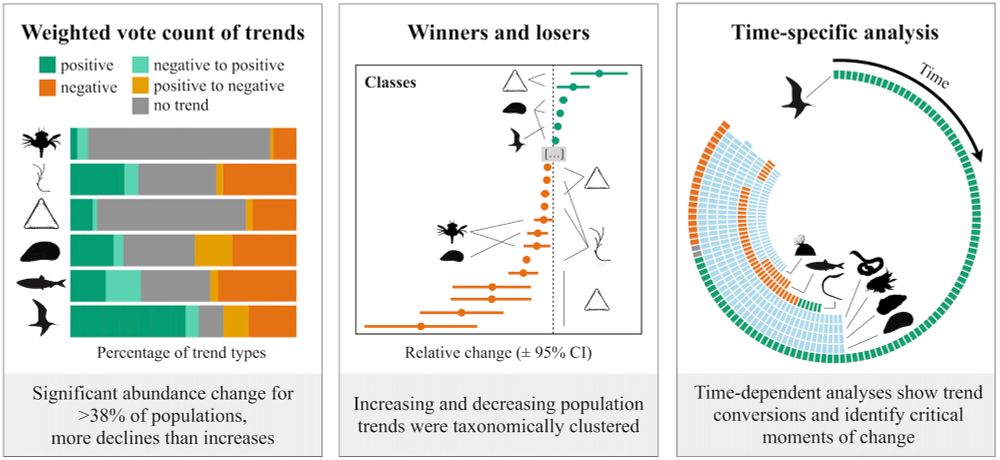
June 19, 2025 at 9:49 AM
In a synthesis of over 3000 population trends in the Wadden Sea, we show a substantial reorganization of biodiversity with over 38% of populations undergoing significant change (i.e., increases or decreases), identify winners and losers and critical time points of change! dx.doi.org/10.1111/gcb....
@lisethouvenot.bsky.social @remoryser.bsky.social @eisenhauerlab.bsky.social @ecolgonzalez.bsky.social @srivastavalab.bsky.social @gqromero.bsky.social @kratina.bsky.social @econetlab.bsky.social
New online! Tailoring interaction network types to answer different ecological questions
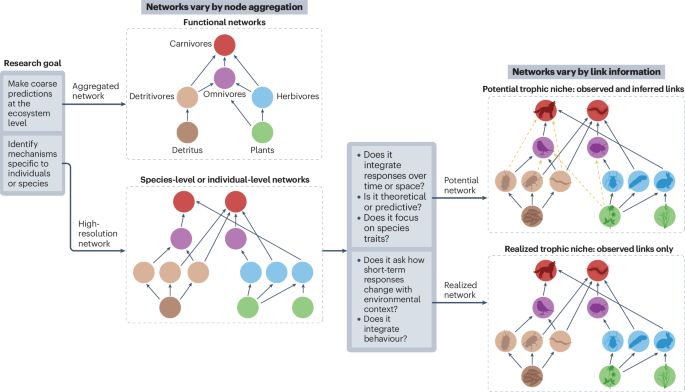
Tailoring interaction network types to answer different ecological questions
Nature Reviews Biodiversity, Published online: 13 June 2025; doi:10.1038/s44358-025-00056-7This Perspective provides guidance about how to select the most appropriate type of interaction network for different research questions in ecology. Networks can vary according to the extent of node aggregation and the information that links represent; each kind of network formulation has advantages in different contexts.
bit.ly
June 16, 2025 at 4:35 PM
Reposted by Benoit Gauzens
Ecological assemblages may be spatially organized by both context dependency and general processes. A study in Nature Ecology & Evolution finds general patterns in the organization of regional biodiversity in biogeographical regions. go.nature.com/3FILzhN 🧪

June 9, 2025 at 7:14 PM
Ecological assemblages may be spatially organized by both context dependency and general processes. A study in Nature Ecology & Evolution finds general patterns in the organization of regional biodiversity in biogeographical regions. go.nature.com/3FILzhN 🧪
Reposted by Benoit Gauzens
Nature research paper: Old carbon routed from land to the atmosphere by global river systems
https://go.nature.com/3Sz8Jdn
https://go.nature.com/3Sz8Jdn
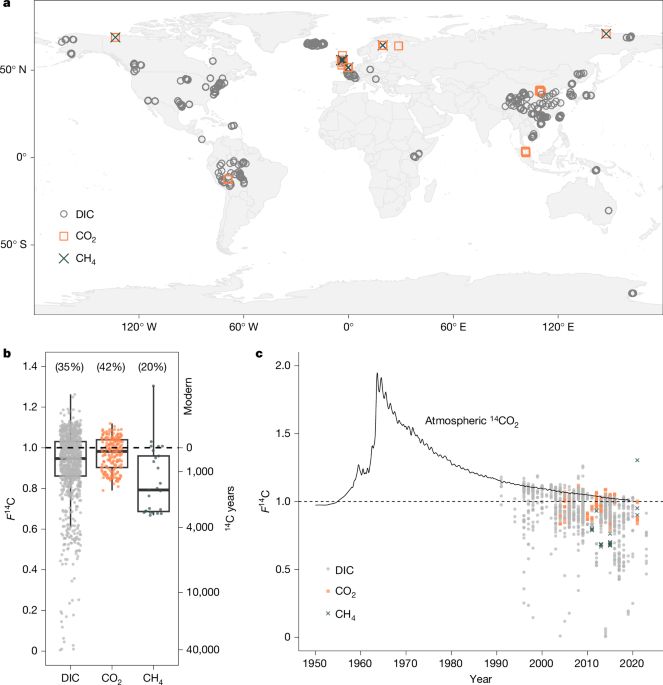
Old carbon routed from land to the atmosphere by global river systems - Nature
Using a global database of the radiocarbon content of rivers combining new and published measurements, isotopic mass balance suggests that about 60% of river CO2 emissions are derived from millennial or older carbon sources.
go.nature.com
June 10, 2025 at 7:37 AM
Nature research paper: Old carbon routed from land to the atmosphere by global river systems
https://go.nature.com/3Sz8Jdn
https://go.nature.com/3Sz8Jdn
Reposted by Benoit Gauzens
Less known than keystone species, keystone communities! Check out the last preprint of Gabriel Khattar and Pedro Peres-Neto about this important property for biodiversity responses to disturbance. doi.org/10.22541/au....
October 6, 2024 at 10:21 PM
Less known than keystone species, keystone communities! Check out the last preprint of Gabriel Khattar and Pedro Peres-Neto about this important property for biodiversity responses to disturbance. doi.org/10.22541/au....
Reposted by Benoit Gauzens
New study out! 🌐🧪
Human pressures are boosting invaders, cutting fishery value by over 50%.
A 21-year study led by Dieison Moi shows how invasions reshape ecosystems and threaten vital services.
www.nature.com/articles/s41...
#Ecology #EcosystemServices
Human pressures are boosting invaders, cutting fishery value by over 50%.
A 21-year study led by Dieison Moi shows how invasions reshape ecosystems and threaten vital services.
www.nature.com/articles/s41...
#Ecology #EcosystemServices

April 29, 2025 at 12:07 PM
New study out! 🌐🧪
Human pressures are boosting invaders, cutting fishery value by over 50%.
A 21-year study led by Dieison Moi shows how invasions reshape ecosystems and threaten vital services.
www.nature.com/articles/s41...
#Ecology #EcosystemServices
Human pressures are boosting invaders, cutting fishery value by over 50%.
A 21-year study led by Dieison Moi shows how invasions reshape ecosystems and threaten vital services.
www.nature.com/articles/s41...
#Ecology #EcosystemServices
Reposted by Benoit Gauzens
I’m thrilled to finally share our new dataset paper-years in the making! This has been an incredible rewarding project, and it was a true pleasure to work with such an amazing team of researchers. Huge thanks to supported by @idiv for the support www.nature.com/articles/s41...
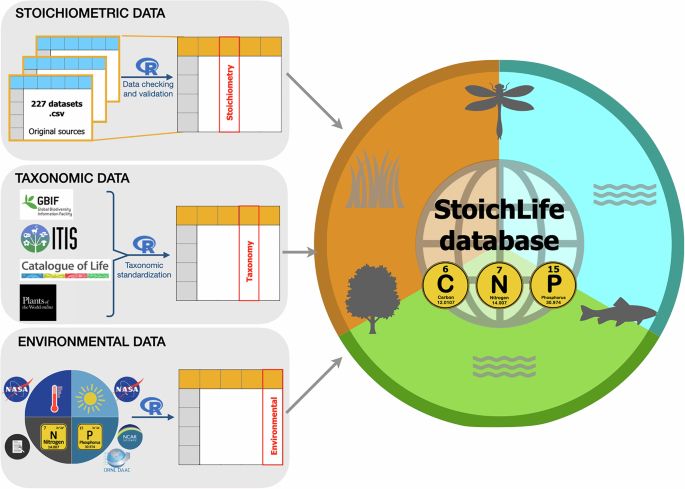
StoichLife: A Global Dataset of Plant and Animal Elemental Content - Scientific Data
Scientific Data - StoichLife: A Global Dataset of Plant and Animal Elemental Content
www.nature.com
April 3, 2025 at 6:36 PM
I’m thrilled to finally share our new dataset paper-years in the making! This has been an incredible rewarding project, and it was a true pleasure to work with such an amazing team of researchers. Huge thanks to supported by @idiv for the support www.nature.com/articles/s41...
Reposted by Benoit Gauzens
OIKOS @oikosjournal.bsky.social
CALL FOR PAPERS - BIOLOGICAL INVASIONS IN THE CONTEXT OF GLOBAL ENVIRONMENTAL CHANGE
www.oikosjournal.org/blog/call-pa...
CALL FOR PAPERS - BIOLOGICAL INVASIONS IN THE CONTEXT OF GLOBAL ENVIRONMENTAL CHANGE
www.oikosjournal.org/blog/call-pa...
Call for papers - Biological Invasions in The Context of Global Environmental Change | Oikos Journal
www.oikosjournal.org
March 31, 2025 at 1:03 AM
OIKOS @oikosjournal.bsky.social
CALL FOR PAPERS - BIOLOGICAL INVASIONS IN THE CONTEXT OF GLOBAL ENVIRONMENTAL CHANGE
www.oikosjournal.org/blog/call-pa...
CALL FOR PAPERS - BIOLOGICAL INVASIONS IN THE CONTEXT OF GLOBAL ENVIRONMENTAL CHANGE
www.oikosjournal.org/blog/call-pa...
Reposted by Benoit Gauzens
Our preprint "Revealing the organization of species stability in ecological communities" now available at doi.org/10.1101/2025...
Comments welcome!
Comments welcome!

Revealing the organization of species stability in ecological communities
Ecological communities are often composed of many species, each interacting in complex ways. This complexity makes predictions of species responses to disturbances challenging. Here, we analyze dynami...
doi.org
March 28, 2025 at 1:59 PM
Our preprint "Revealing the organization of species stability in ecological communities" now available at doi.org/10.1101/2025...
Comments welcome!
Comments welcome!
Reposted by Benoit Gauzens
This paper - Quantifying disturbance effects on ecosystem services in a changing climate - was motivated by the need to anticipate and quantify how extreme events, which are accelerating with climate change, impact nature;s contributions to people, YET ... www.nature.com/articles/s41...

Quantifying disturbance effects on ecosystem services in a changing climate - Nature Ecology & Evolution
A generalizable, functional-trait-based approach for quantifying the effects of disturbances to ecosystem services and economic outcomes, including under climate change, highlights the need for incorp...
www.nature.com
March 5, 2025 at 3:15 PM
This paper - Quantifying disturbance effects on ecosystem services in a changing climate - was motivated by the need to anticipate and quantify how extreme events, which are accelerating with climate change, impact nature;s contributions to people, YET ... www.nature.com/articles/s41...
Reposted by Benoit Gauzens
Warming can affect many physiological processes. But any attempt to scale up individual-level processes to population-level consequences must assume a relationship between temperature & the strength of density dependence. But what does it look like? In our new paper, we tried to find out.
Strengthening of negative density dependence mediates population decline at high temperatures
You have to enable JavaScript in your browser's settings in order to use the eReader.
esajournals.onlinelibrary.wiley.com
March 5, 2025 at 10:25 PM
Warming can affect many physiological processes. But any attempt to scale up individual-level processes to population-level consequences must assume a relationship between temperature & the strength of density dependence. But what does it look like? In our new paper, we tried to find out.

